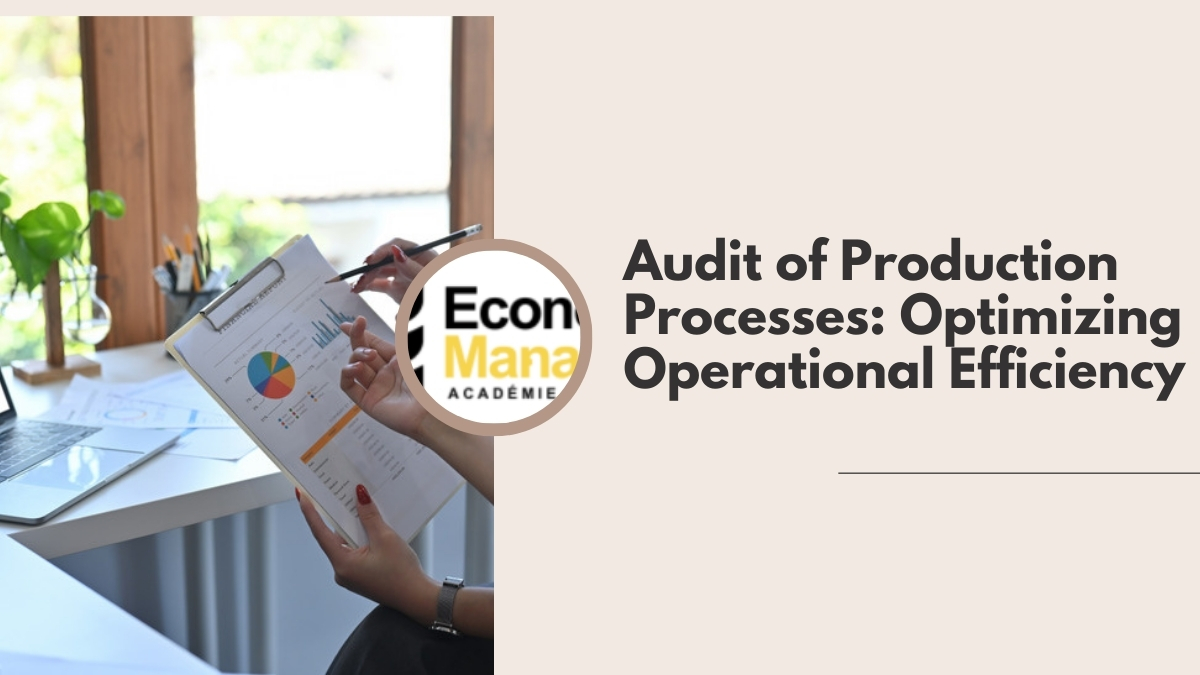Strategic audit has emerged as a powerful tool for organizations to align their objectives with their resources. This process involves a comprehensive review of a company’s strategies, performance, and internal and external environment to ensure that its goals are not only ambitious but also achievable with the available means.
By conducting a strategic audit, businesses can identify gaps between their aspirations and their capabilities, make informed decisions, and allocate their resources effectively to gain a competitive edge and drive sustainable growth.
Table de matières
Understanding the Significance of a Strategic Audit
The business world is rife with challenges and opportunities. Organizations strive to define their objectives, allocate resources, and navigate an uncertain future. In such a dynamic environment, a strategic audit serves as a compass, helping businesses align their strategies with their goals and ensuring they remain on course. Think of it as a comprehensive health check-up for your organization’s strategic direction.
A strategic audit delves deep into the heart of a company, examining its vision, mission, and values. It assesses the effectiveness of strategies employed and evaluates the alignment between objectives and resources. This process is crucial as it identifies gaps, inefficiencies, and areas of improvement, enabling businesses to course-correct and optimize their path to success.
For instance, consider a retail business aiming to expand its online presence. A strategic audit would involve analyzing its e-commerce strategy, assessing the effectiveness of its website and marketing campaigns, and evaluating the alignment between its online objectives and IT resources. This audit might uncover gaps in the integration of its online platforms or identify areas where additional investment in technology or skilled personnel could significantly enhance its online performance.
Key Components of a Strategic Audit: Objectives, Strategies, and Resources
At its core, a strategic audit revolves around three key elements: objectives, strategies, and resources. Objectives refer to the specific, measurable goals an organization sets out to achieve. Strategies encompass the plans, tactics, and approaches employed to reach those objectives. Resources, on the other hand, represent the tangible and intangible assets available to the organization, including financial capital, human talent, technology, intellectual property, and brand reputation.
The interplay between these components is crucial. Objectives provide the destination, the north star toward which the organization navigates. Strategies serve as the roadmap, outlining the specific actions and approaches needed to reach the desired destination. Resources, meanwhile, are the fuel that powers the journey, ensuring the organization has the necessary means to execute its strategies and attain its objectives.
For example, consider a technology company aiming to develop and launch a groundbreaking new product. Its objective might be to achieve a 20% market share within the first year of the product’s launch. The company’s strategies could involve investing heavily in R&D, forming strategic partnerships for distribution, and conducting an aggressive marketing campaign to generate buzz. The resources required include financial capital for investment, specialized talent in R&D and marketing, and intellectual property rights to protect their innovation.
Unraveling the Benefits: Alignment, Compliance, and Risk Management
Conducting a strategic audit yields a multitude of benefits for organizations, with three key advantages standing out: alignment, compliance, and risk management.
Alignment
Alignment is crucial for any organization’s success. A strategic audit ensures that objectives are harmonized with strategies and resources. This alignment prevents a disconnect between aspirations and capabilities, ensuring that goals are realistic and achievable. By identifying areas of misalignment, businesses can adjust their strategies, reallocate resources, and bridge the gap between their vision and their actual performance.
For instance, a strategic audit might reveal that a company’s objective to expand internationally is not supported by adequate financial resources or local market knowledge. To address this misalignment, the company could partner with established local businesses or focus on markets with higher potential for success given their current capabilities.
Compliance
Compliance is another critical aspect of a strategic audit’s benefits. Organizations must adhere to various regulations, industry standards, and ethical guidelines. A strategic audit helps ensure that a company’s objectives and strategies are compliant with legal and ethical frameworks. This aspect is particularly crucial in highly regulated industries such as finance, healthcare, and environmental sectors.
For example, a financial services firm must ensure that its investment strategies comply with regulatory requirements and consumer protection laws. A strategic audit would help identify any potential conflicts or violations, enabling the firm to adjust its practices and remain compliant.
Risk Management
Risk is inherent in any business venture, and a strategic audit assists in identifying and mitigating potential risks. By evaluating the alignment between objectives and resources, organizations can anticipate and prepare for potential challenges. A strategic audit also helps in crisis management, providing a framework to assess vulnerabilities and allocate resources effectively to minimize risk exposure.
Consider a company aiming to expand into a new market. A strategic audit would help identify potential risks, such as cultural differences, political instability, or unforeseen competition. This awareness enables the company to develop contingency plans, allocate resources for risk mitigation, and enhance its resilience.
A Comprehensive Guide to Conducting a Strategic Audit
Conducting a strategic audit involves a systematic and comprehensive approach. The following steps outline a practical guide for organizations to follow when undertaking this critical process:
- Define objectives: Clearly articulate your organization’s objectives, ensuring they are specific, measurable, achievable, relevant, and time-bound (SMART). This provides a clear direction and scope for the audit.
- Gather information: Collect and analyze data pertaining to your organization’s internal and external environment. This includes financial reports, market research, competitor analysis, customer feedback, and industry trends. A 360-degree view is essential for an accurate assessment.
- Evaluate strategies: Assess the effectiveness of your current strategies in achieving your defined objectives. Identify gaps, inefficiencies, or areas of improvement. This involves a critical examination of your marketing, financial, operational, and human resource strategies, among others.
- Analyze resource allocation: Evaluate how your resources are currently allocated. Are they aligned with your objectives and strategies? Identify any mismatches between resource availability and the requirements to achieve your goals.
- Identify risks and opportunities: Beyond your internal environment, consider external factors that could impact your business. Identify potential risks and opportunities arising from technological advancements, market shifts, regulatory changes, or global events. This step ensures your strategies are robust and adaptable.
- Prioritize actions: Based on your findings, prioritize the actions needed to address gaps, misalignments, or risks. Develop specific initiatives or projects to address these issues, ensuring they are achievable and have clear timelines.
- Allocate resources effectively: Given your identified priorities and actions, reallocate your resources accordingly. This could involve financial investments, hiring decisions, technology upgrades, or process improvements. Ensure that your resources are deployed efficiently to support your strategic objectives.
- Implement and monitor: Execute your revised strategies and initiatives, but remain vigilant. Continuously monitor your performance, key metrics, and external environment. This allows for swift course corrections and ensures your strategies remain relevant and effective.
By diligently following these steps, organizations can ensure that their strategic audit is thorough and actionable, providing a solid foundation for decision-making and resource allocation.
Embracing Transparency and Enhancing Performance through Governance
Strategic audits are closely intertwined with the concept of governance, which refers to the systems and processes by which an organization is directed and controlled. Good governance is a critical aspect of strategic audits as it promotes transparency, accountability, and fairness.
When conducting a strategic audit, organizations should involve their governance bodies, such as the board of directors or supervisory committees. These entities provide independent oversight, ensuring that the audit process is impartial and comprehensive. They challenge management’s assumptions, ask probing questions, and demand rigorous analysis, thereby enhancing the audit’s credibility.
Additionally, governance plays a pivotal role in ensuring the implementation of strategic audit findings. The board or supervisory committees can provide guidance, support, and resources to facilitate necessary changes. They hold management accountable for executing the agreed-upon actions and monitor the organization’s performance to ensure that the strategic audit delivers tangible improvements.
For example, consider a publicly traded company that has conducted a strategic audit, identifying the need to diversify its product offerings. The board of directors, as part of their governance role, would oversee the audit process, provide strategic advice, and ensure that management allocates resources effectively to develop and launch new products. They would also monitor the company’s financial performance and market share post-launch, holding management accountable for the successful execution of the diversification strategy.
Conclusion: Empowering Businesses to Navigate the Future
In a volatile and uncertain business landscape, a strategic audit serves as a beacon, guiding organizations toward success. It empowers businesses to align their objectives with their resources, ensuring that strategies are realistic, compliant, and risk-managed. By conducting regular strategic audits, organizations can navigate challenges and seize opportunities, adapting to changing market dynamics and emerging stronger.
This article has provided an in-depth exploration of strategic audits, highlighting their significance, key components, and benefits. The practical guide to conducting a strategic audit offers a step-by-step framework for businesses to enhance their alignment, compliance, and performance. By embracing transparency and good governance, organizations can leverage strategic audits to make informed decisions, allocate resources effectively, and ultimately, secure a sustainable competitive advantage.







